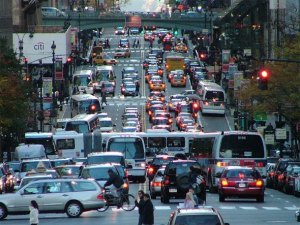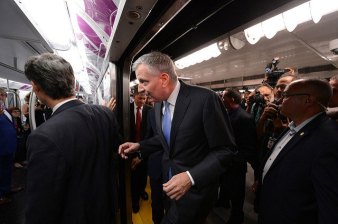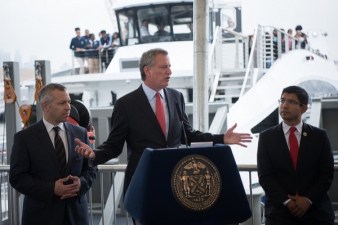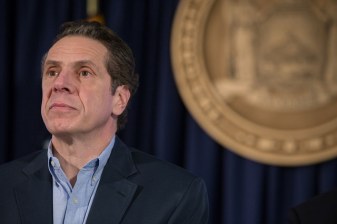4 Ways the Mayor Can Reduce Congestion Without Congestion Pricing
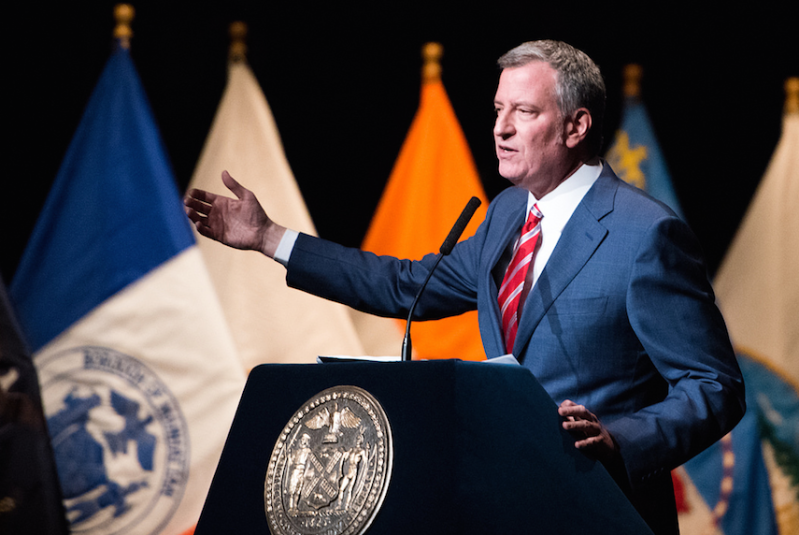
Speaking at an event in Brooklyn yesterday, Mayor de Blasio said his forthcoming congestion plan, which he teased last month on WNYC and again in his “State of the City” speech on Monday, won’t include tolling East River bridges, AM New York reports.
De Blasio said he understands “the intellectual rationale” for congestion pricing, which stalled in the Assembly in 2008, but that he’s “always had concerns.” (He voted against it as a City Council member then later as public advocate said he was “open” to bridge tolls.)
The political reality is that Move New York toll reform, the traffic pricing plan that’s accumulated several sponsors in Albany, hinges on support from Governor Andrew Cuomo more than de Blasio.
But de Blasio has plenty of other options at his disposal to reduce traffic congestion. Here are four policies that would provide much-needed traffic relief on NYC streets. They may not pack the same punch as Move NY, but they are within the mayor’s power to enact. It’s difficult to imagine any City Hall-led traffic reduction initiative that doesn’t include some of these ideas.
1. Charge smarter prices for curbside parking
In neighborhood commercial districts, drivers cruising for open parking spaces account for a large share of traffic. Because on-street parking is so cheap, it’s worth motorists’ time to circle around looking for an open spot instead of paying the premium to park in a garage.
The PARK Smart program, which DOT launched in Greenwich Village in 2008 but has expanded to only a handful of neighborhoods since then, addresses the problem by charging dynamic rates for curbside parking that increase when demand is highest. The program has proven successful at reducing the amount of time drivers occupy a given parking space.
Last January, DOT promised “a more comprehensive management plan for the metered parking environment,” but that plan has yet to materialize. The recent introduction of ParkNYC, the city’s new mobile parking meter app, is a hopeful sign: In announcing the new technology, DOT Commissioner Polly Trottenberg said it “opens the door” for smarting parking policy, and that the city is now “technology-enabled to move forward with [dynamic pricing].”
2. Parking placard reform
The city’s 100,000-plus parking placards are a big contributor to congestion, and the unknown number of bogus placards used by people exploiting the system don’t help either. Just walk around public buildings in Lower Manhattan to see how many government employees (and impostors) use their placards to drive and park illegally with impunity. A 2006 study by Bruce Schaller concluded that these parking perks induce tens of thousands of car trips each day into the most transit-rich, congestion-choked parts of the city.
NYPD officials have not shown any interest in placard reform, and any push from City Hall is certain to pit the mayor against the city’s municipal unions, as it did during the Bloomberg administration. Nevertheless, placard reform remains one of the most powerful tools to address congestion at the mayor’s disposal.
3. HOV restrictions on East River bridges
In 2001, after the September 11th attacks, the Giuliani administration banned single-occupancy vehicles from crossing bridges and tunnels into Manhattan south of 63rd Street between 6 a.m. and 11 a.m, which resulted in a 23 percent decrease in traffic during the morning peak. On October 17, the city shortened the restriction by one hour, to 6 a.m. to 10 a.m., which resulted in a 15 percent decrease from before the attacks.
While rush-hour HOV restrictions are a blunt instrument compared to toll reform, the impact could still be significant, reducing the amount of cars coming into Midtown and Lower Manhattan at the times when the street grid needs the most relief.
Typically, the city has only enacted HOV restrictions in the central city during extraordinary situations like a transit strike or the aftermath of Superstorm Sandy. But like those events, the looming L train shutdown will create enormous strain on the transportation system, and HOV restrictions will make a lot of sense as part of the plan to keep New Yorkers moving.
4. Prioritize bus service on city streets
A street grid where transit doesn’t take priority over private cars simply can’t handle the city’s growing population. Currently, DOT and the MTA roll out a couple of Select Bus Service routes with dedicated bus lanes each year. But de Blasio doesn’t have to wait for the expansion of SBS to paint more bus lanes and add transit priority at traffic signals.
DOT has identified street segments where buses need priority, and the agency is in the process of generating a citywide plan to speed up buses. It won’t cure congestion, but strong follow through on this initiative from the mayor will help New York City’s car-free majority bypass traffic bottlenecks.
